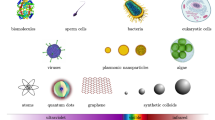Abstract
THE introduction of the shearing principle in the examination of optical wave-fronts by interferometry1 has led to a great simplification of the apparatus required. Recent developments2,3 have made possible the construction of compact portable interferometers for the examination of optical systems of large size, and several instruments are now available from optical manufacturers. For some purposes, however, it is possible to use as a shearing interferometer an even simpler system which is already in wide use for another purpose. This is the square prism used in photometry for dividing a beam of light into two. It is composed of two similar right-angled prisms cemented at their hypotenuse faces after one face has been coated with a semi-reflecting film. An application of this prism to the interferometry of length was first described by Kösters4, but the prism is also very useful as a shearing interferometer.
Similar content being viewed by others
References
Bates, W. J., Nature, 158, 221 (1946).
Drew, R. L., Proc. Phys. Soc., B, 64, 1005 (1951).
Brown, D. S., Proc. Phys. Soc., B, 67, 232 (1954).
Kösters, W., German Patent 595211 (1934).
Gates, J. W., Proc. Phys. Soc. (to be published).
Author information
Authors and Affiliations
Rights and permissions
About this article
Cite this article
GATES, J. Reverse-Shearing Interferometry. Nature 176, 359–360 (1955). https://doi.org/10.1038/176359a0
Issue Date:
DOI: https://doi.org/10.1038/176359a0
- Springer Nature Limited
This article is cited by
-
Complete characterization of ultrashort optical pulses with a phase-shifting wedged reversal shearing interferometer
Light: Science & Applications (2018)
-
Cube beam-splitter interferometer for phase shifting interferometry
Journal of Optics (2009)
-
A Single Element Birefringence-Sensitive Interferometer
Journal of Optics (2008)





